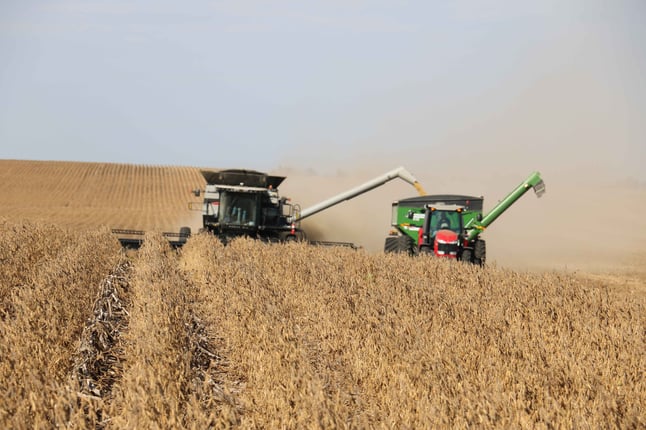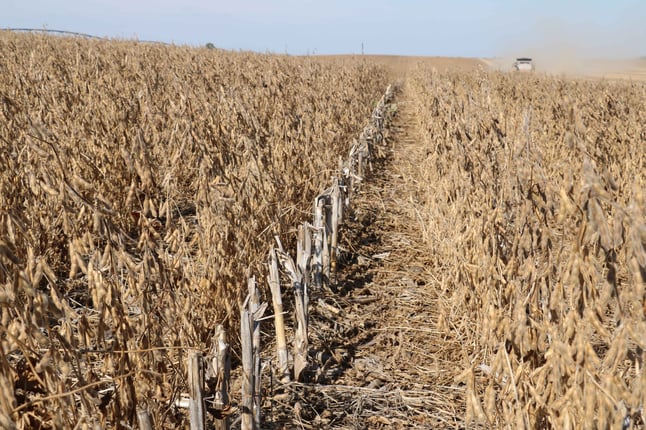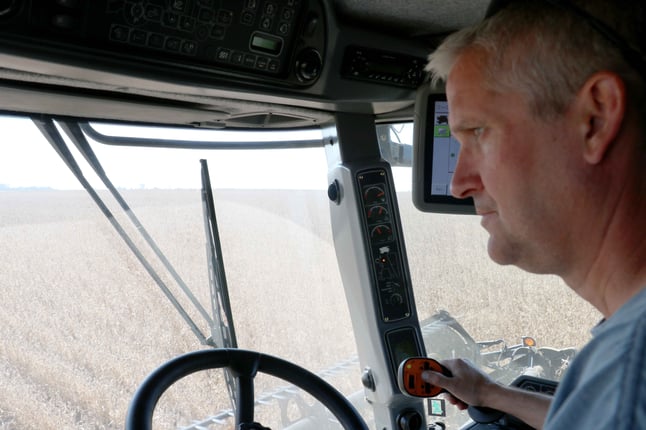This blog is part of a podcast series following one Minnesota farmer through a season of strip-till. Listen to the full audio episode by scrolling to the bottom of the page.
A strong southerly wind blows across the prairie in western Minnesota’s Lac Qui Parle County as Ed Hegland’s Gleaner combine gobbles up rows of ripened soybeans. The combination of strong winds, dry air, and sunshine is ideal for crop dry down.
Farmers like Hegland don’t let perfect harvest days like this go to waste.
“I’ve gotten just about 400 acres done so I’m moving along,” Hegland says. “I’ve got about 900 acres of soybeans this year so I’ve got about 40 percent done. About 320 acres got the hail, so that’s got a few weeks to try and mature. So far the yield has been a fair amount above average and very uniform.”

Late summer and early fall have been relatively dry on Hegland’s farm. Because he zone tills his entire 1,800 acre farm, moisture was never a concern. The tilled zones made by his SoilWarrior hold in moisture the crops need. Even though the field he’s harvesting is equipped with irrigation equipment, Hegland never needed to turn the system on this season. During harvest, the dry fields make for good combining, especially for soybeans.
Hegland’s soybeans were strip-tilled into a field that held corn last year. Remnants of last year’s corn stalks stand 12 to 18 inches off the ground in between the soybean rows. Those stalks pose no problem for harvest.
“When I strip-till in my corn stalks for beans I go over about 10 inches, sometimes right in the middle on my 30 inch rows, so I’m putting the strips right between the corn rows,” he says. “Now as I’m combining beans you can still see the corn stalks standing but they really don’t cause any issues at all.”

Harvest began with his early season soybeans. Depending on how the weather holds, Ed plans to keep the wheels turning. In a good year, he will be finished by Halloween. Some years he’s done sooner, other years the process can drag out until nearly Christmas. Regardless of the timeline, Hegland will keep moving until the job is done.

As his combine churns its way across the field, Hegland keeps a watchful eye on all the meters, gauges, and monitors tracking the process. Of particular interest to most farmers is the yield monitor. Since making the switch from conventional to conservation tillage several years ago, Hegland’s crop yields are just one of the reasons he has made 2015 another season of strip-till.
“I like the environmental benefits of it but I wouldn’t be doing it if it was costing me money. I think my yields are as good as anybody’s compared to the neighborhood and I think my costs are down significantly,” Hegland adds. “Economically it certainly makes sense.”
Listen to the full audio episode below or the full podcast series.